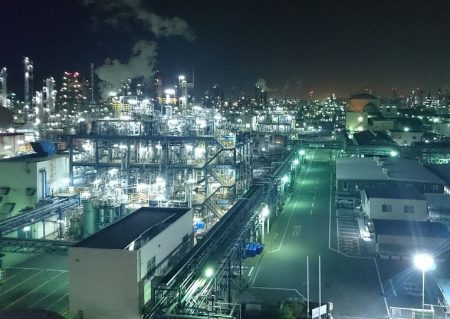
Save on commercial power bills with power factor correction
A power factor is a measure of efficiency. It is a ratio of the load power to the apparent load power drawn by an electrical load. In other words, it is how efficiently power is converted into useful working output. Energy is created, and sold to the user, in Kilowatt Volt Amperes, which is transformed from the supplier network into your particular appliances or premises. If the power factor is low (i.e. the transfer is poor), then the supplier will need to supply more energy to your applications for the same performance of the appliance. What we pay for is the energy supplied, not the work produced. Therefore, to pay less for the same output, the efficiency, or power factor, must be increased.
For example, if a motor is running with an 0.85 power rating, (i.e has an 85% efficiency, to get the same apparent load power as a motor with a power rating of 1 (100%), the supplier would need to supply an additional 15% of power – and charge an additional 15% for the same output from your motor. Not only this, but when a certain power factor threshold is broken by a premises, i.e. their power efficiency is considered to be low, the energy company will charge an additional premium. Understanding the complexities of power factors is not essential, but understanding the consequence (both financial and environmental) is important.
What can be done to increase a Power Factor?
Power Factor Correction has numerous benefits. By increasing the load carrying capacity and reducing the demand charge, not only are you decreasing bills, but also allowing for future growth. Circuits can maintain a set load capacity, and if energy demands increase, the whole energy distribution network may have to receive a large investment. In increasing the power factor, the same amount of energy can produce a lot more work, and therefore, expensive upgrade costs can be delayed, if not avoided.
Not only will your plant run more efficiently, have better power and save on energy bills, but the reduction in strain on the grid will stop the need for hundreds of tons of carbon emissions to be produced for energy that will not be effectively used.
The most common method to increase a power factor is by installing a suitably sized switched capacitor. By installing switched capacitors to the power distribution circuit, power is stored and distributed in a much cleaner fashion, increasing the power factor towards 100%, and reducing the energy required to drive the premises, and therefore reducing the cost. These systems are so effective that the instillation cost is usually reclaimed in under a year. And from then on, the savings are pure profit.
Is Power Factor Correction Right for Me?
Power factors are lowest in industrial manufacturing settings, mostly where large, under-used induction motors are involved. Here, power factors can be as low as 0.1 (10%), and performing power factor correction will have a significant effect. The reduction in billings here will actually be less from the direct saving on the units of energy used, but actually from the high penalty applied to the whole of the site’s energy bill by the energy supplier. Installing capacitors also levels out the demand fluctuations throughout the day, another area where energy suppliers can charge industrial and commercial customers an additional premium.
The benefits of power factor correction for commercial premises are widespread, from the higher efficiencies and increases capacities of power networks to the reduced tariffs applied to an energy bill. The complexities and specifics are different on each and every site. A site survey will quickly start to show the opportunities, and the potential benefits from power factor correction.